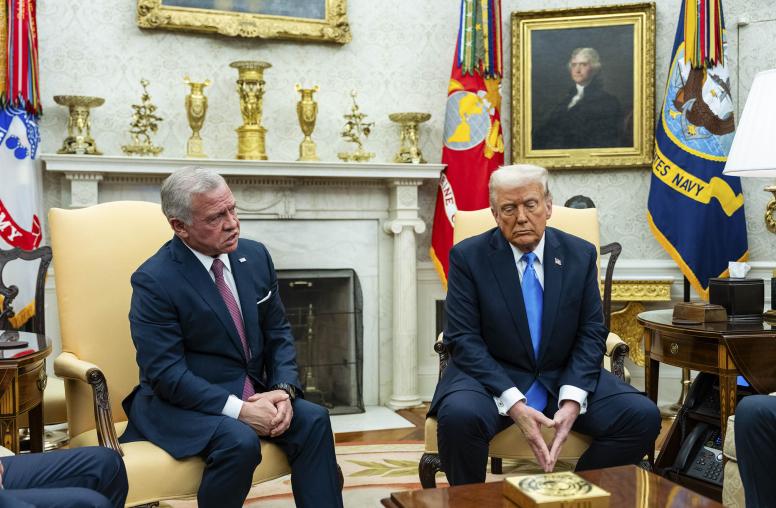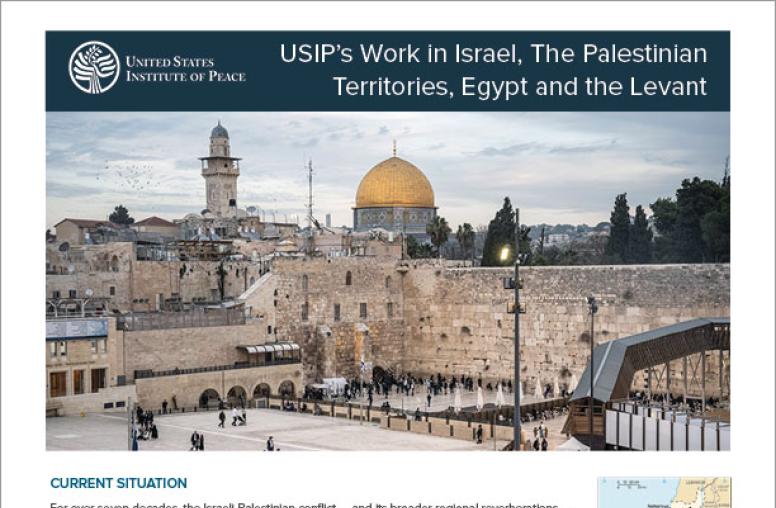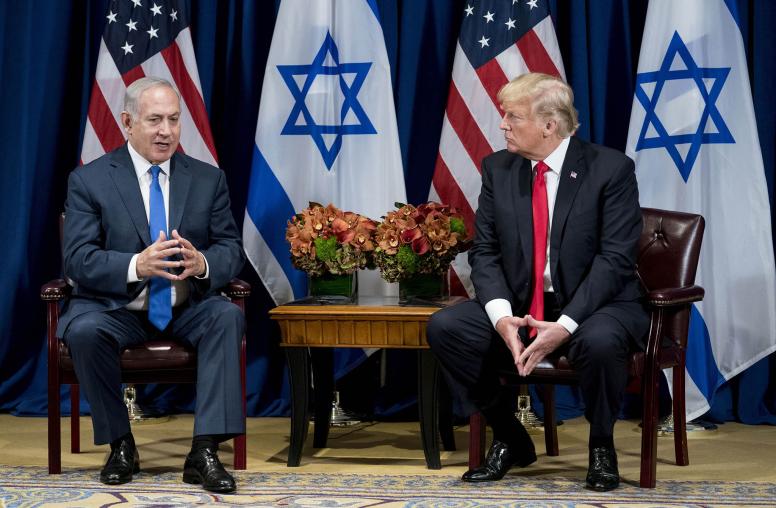What Does President Trump’s Decision on Jerusalem Mean for Israeli-Palestinian Peace?
Specifics must swiftly follow if Jerusalem play is to yield peace dividends
Today, President Trump—for the second time while in office—exercised his waiver authority on the 1995 Jerusalem Embassy Act. The law calls for the United States Embassy, currently located in Tel Aviv, to be moved to Jerusalem, in recognition of that city as Israel’s capital. The choice to waive enactment in the name of national security interests hits the president’s desk every six months and, beginning with President Clinton in 1998, has been continuously exercised by each president. But this time was different.

While signing the waiver, Trump simultaneously clarified that he was setting in motion a plan to move the embassy, and became the first United States president, since the establishment of the state of Israel in 1948, to affirm the status of Jerusalem as that country’s capital. Given Jerusalem’s tried and true role as a perennial flashpoint in the Israeli-Palestinian conflict, this move has far-reaching implications, in particular for the president’s consistently-affirmed goal to achieve the “ultimate deal.”
Senior White House Advisor Jared Kushner, tasked with spearheading efforts to bring an Israeli-Palestinian peace deal to fruition, made rare public remarks last Sunday, that while bereft of specifics, affirmed that a peace plan was in the works. In light of today’s announcement, for that plan to have a chance at success, the sooner it will need to be revealed.
Earlier today, Secretary of State Rex Tillerson urged that people listen to Trump’s speech in its entirety, implying that a rush to judge this latest move as anathema to the pursuit of peace is unwarranted. Indeed, in his speech announcing the policy change, Trump reaffirmed his commitment to pursue a peace deal between Israelis and Palestinians, expressing that this move is simply a “recognition of reality” that does not prejudice the outcome of an eventual negotiated agreement, including on final boundaries in Jerusalem. However, history has shown us that subtlety and nuance rarely rule the day when it comes to the proverbial street’s reactions to Jerusalem.
With an English and Hebrew name that translates into “City of Peace,” Jerusalem has tragically failed to live up to that title. Sacred to Jews, Muslims and Christians, and home to the holiest site in Judaism, and the third holiest site in Islam, developments in the city were the spark for the second intifada in 2000, as well as for preceding and subsequent rounds of violence. Israel installing metal detectors on the Temple Mount/Haram al-Sharif this past summer, as an ostensibly rational response to a terrorist attack, set off widespread protests and incidents of violence, sparked by suspicion that the security measures were actually cover for Israel to alter sovereignty arrangements and change the status quo.
This pattern is not surprising. Decades of failed efforts at diplomacy and rounds of devastating violence have entrenched deep mutual distrust between the parties, and engendered pervasive skepticism that the United States or broader international community has the will or ability to make a difference. This potent mix—Jerusalem’s unique sensitivities and widespread despair at lack of progress toward peace--makes for an environment ripe for missteps, misinterpretation, and manipulation.
It is with reference to this state of affairs that President Trump announced his change in policy, noting that past assumptions have been proven wrong, and past efforts proven fruitless. Yet he did not connect the dots from this specific change in policy to a renewal of a meaningful path to peace. Palestinian officials have warned that such an announcement would affect their ability to view the United States as a credible mediator in this conflict. Beyond Jerusalem, Palestinians have increasingly expressed concern that the goal of a Palestinian state alongside the State of Israel is no longer the clear endgame of this Administration’s peace efforts. While Trump made reference to U.S. support for the two-state solution in the speech, it was a repetition of the qualified formula that he has consistently used: that he would support such an outcome “if agreed to by both sides.” This will make it difficult for the Palestinian leadership to come back to the negotiating table for a U.S.-brokered process, unless this card played in Israel’s favor is now to be followed with one that speaks to Palestinian interests.
President Trump is correct that the history of diplomatic failure in this conflict argues for bold and creative approaches to its resolution. Continuity, if simply for continuity’s sake, is risk aversion, rather than strategy. If this Administration’s gambit on Jerusalem is carefully calibrated to jump start a moribund process, with the goal of reaching an agreement that takes into account the competing interests of both sides, then one could be looking at a high risk move that holds some possibility. But in the absence of any immediate connection to a clear, and clearly articulated diplomatic horizon, strategy and process, bold moves simply for bold moves’ sake could risk destabilization and the closing-off of diplomatic options.



